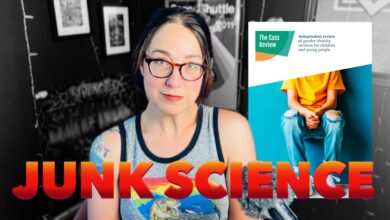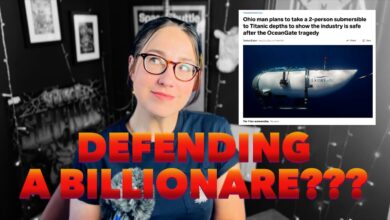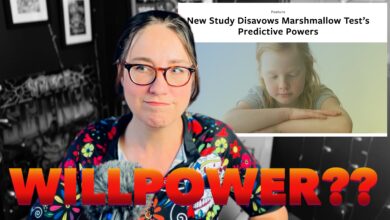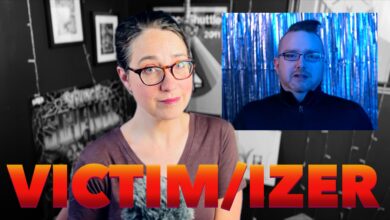Your Lawn Sucks (Why No Mow May is Good)
This post contains a video, which you can also view here. To support more videos like this, head to patreon.com/rebecca!
Well, it’s “No Mow May” and you know what that means: throw away those razors and embrace the bush. Enjoy the lush feeling of a gentle spring breeze rustling your leg hair!
Oh, hold on, I’m getting word that this isn’t “no shave November” for women, it’s actually literally about not mowing your lawn. Huh.
That’s right, I’m going to be talking today about PLANTS. Oh, do you find that boring? Is that not what the YouTube algorithm thinks people want to hear about? I DON’T CARE. I got a plant in April of 2020 and it awoke something in me and now I live in a jungle and I’m growing native California plants from seed and giving them to my neighbors whether they want them or not and god dammit I’m going to talk about No Mow May whether YOU like it or not.
I’ve noticed there are two distinct camps regarding “No Mow May:” on the one side are the proponents, who say that not mowing your lawn will attract native pollinators, increasing biodiversity, stopping climate change, and saving the world. On the other side are the buzzkills, who say not mowing your lawn will actually increase invasive weeds, strangling out native wildlife, destroying the food supply, and hastening our inevitable march toward a fiery extinction.
In the middle is me, the only reasonable person to have ever lived. That’s a lot of responsibility but I don’t mind, because I am perfect.
Okay obviously I’m kidding: most people who actually care about No Mow May are very reasonable, though there really are annoying extremists who come close to my exaggeration. Seriously, when I bought my first house four years ago, I had no idea how heated people could get over yards. Homeowners Associations demanding perfectly boring green lawns, nosy neighbors tsk-tsking over the same, fire departments fining people for overgrown areas (yes that’s a thing here in the fire-prone Bay Area), and yes even some native plant enthusiasts complaining about anything that hasn’t been in the area for more than 100 years. And I’m glad I learned all that back then because it did really prepare me for the drama on TikTok and other social media networks over “No Mow May.”
The basic idea of No Mow May is that if we all stop mowing our yards for a month, it will allow flowers to grow and beneficial insects to come hang out. This actually started in the UK in 2019 by the conservation group Plantlife, which oversees 4,500 acres of important plant habitat. Compared to the US, the UK has much less of a problem with introduced invasive weeds, so when the average homeowner there stops mowing their lawn, the flowers that grow are likely to be the ones that native pollinators like, meaning that this is probably a really good idea to improve local biodiversity.
Here in the US, things aren’t quite that simple. We are a very colonized nation–not just by Europeans, but also by their god damn plants. And also the plants of Asia, and also even Africa and Australia. Ask me about my local fire-prone park full of exploding eucalyptus trees! And so when we let our lawns go feral, there’s a good chance that those plants, which don’t have the same natural predators that they do in their evolutionary homes, are going to outcompete native plants that have spent many millennia evolving with our local wildlife.
You already know all this of course, because I talked about it a few years back in this video on why you should care about pollinators like native bees, so I assume no one is going to leave a comment saying something stupid like “weeds are just plants you don’t like.”
So yes, as these entomologists wrote for The Conversation, you won’t really be doing much for the environment if you have a lawn in the United States and you don’t mow it for a month, and in fact you may be making the problem worse.
But still, I can’t quite get on the same bandwagon as many of my science-communicating friends and argue vociferously against No Mow May on social media. Why? Because I honestly think that this is a very good gateway to someone actually doing something good for the environment.
Here’s the thing: one month of not mowing your lawn isn’t going to result in a shoulder-height meadow of weeds and flowers. The grass will just get a little longer. But during that month, you’ll NOT be using gasoline to run your lawn mower Saturday, and that is good for both the environment and my sleep schedule. Fun fact, in addition to being annoying as fuck, lawnmowers produce as much air pollution in an hour as driving a car for 100 miles.
During your month of no mowing you’ll also learn that not mowing your lawn does not cause the world to end. Unless you have very annoying neighbors or an HOA, no one will give a shit and life will go on. That is also a good thing because we really need to do away with the idea that a well-manicured lawn is an essential piece of the all-American successful suburban homeowner puzzle. We inherited that idea from 19th century European aristocrats and here in 2024 it is just an immensely silly status symbol. Culture is overwhelming, of course, and so it can be hard to look at aesthetic things from an objective viewpoint, but guys, single-grass mowed lawns are BORING. I mean, unless you’re playing wiffleball on it I guess. Otherwise? Personally I would rather have pretty flowers and busy bees and a lower water bill and an extra hour of time to sleep in on Saturday.
So yeah, I think here in the US No Mow May is NOT just a cut-and-dry bad thing. I think the benefits may make up for the drawbacks, and they definitely overwhelm the drawbacks if it inspires homeowners to start thinking outside the box when it comes to their lawns. No Mow May might naturally lead to Replacing the Lawn with Native Plants June, which is NOT nearly as catchy but maybe someone can come up with something better, I don’t know.
Because that’s the really cool thing you can do to your lawn: kill it and plant a bunch of native stuff instead. That’s what I did shortly after we moved in. We had a large green grass lawn that had an entire sprinkler system keeping it alive, and we had to go out and buy an electric trimmer to whack it down because if we didn’t, it would become a fire hazard in the late summer.
So I covered it up with cardboard to kill the grass and any weeds, dumped a bunch of compost on top of that, and then a whole lot of compost on top of that. It’s called sheet mulching if you wanna look up the details but that’s about all there is to it. And then I went out and got some seeds and started growing native plants. And let me tell you, it has NOT been easy but it HAS been fun and rewarding. It’s a learning process: some stuff dies, some stuff takes off. Some stuff is irresistible to our local bees and birds, and some is unfortunately irresistible to our local herd of deer. Some stuff needs a little cage around it at first to protect it from silly doggos that get the zoomies.
And gardening/landscaping is an S-tier hobby in nearly every way. You can spend whatever amount of money you want, and I spent basically no money at all. I got a big fat rebate from my local water company in addition to the now-lower bills, I get seeds and seedlings from local native plant nonprofits and aficionados, and now I collect my own seeds and germinate them and give them away to others. So it’s cheap, but also it gets you outside looking at nature, which many studies show substantially helps mental health, and also it gets you moving around pulling weeds and stuff which ALSO helps your mental health, AND if you take it as far as me it also has that social aspect of connecting with your neighbors to help your local ecosystem.
Oh yeah and it does that, the thing that is the point of this entire video: it genuinely helps your local plant and animal diversity. As I mentioned in that previous bee video, you can make a difference whether you have a big yard like I do or if you only have a little window box, patio, or strip of land between your place and the street. Every little bit helps, and when we all do it, it creates a broader landscape that allows native wildlife to flourish.
I’ll just end with a little tour of what’s happening in my yard today, about three years after I killed the grass lawn. I just went out and pulled a bunch of non-native geranium and other plants that were getting in the way of the natives, and I found that a new weed had taken over that I couldn’t identify by eye or by using the very handy Seek app. I pulled a bunch of them that were in annoying places but left more to see what it would turn into, and I’m astonished to report that this rampant “weed” is actually a native plant known as collomia grandiflora, that erupts in these buttery peach colored flowers. The bee plant that I thought died last summer actually put out tons of new plants that have taken over one chunk of the yard, this little seaside daisy also came back from the dead with the winter rains, and I was honestly shocked to discover I was able to grow a bunch of things from seed that are now happily blooming, like yarrow, chick lupine, and my favorite, foothill penstemon.
I don’t know, I’m sure many of you will still prefer a grass lawn. I get it! I grew up playing badminton and croquet on one, myself! But personally, I will never go back. If this video makes you reconsider even adding a small strip of native plants to your landscaping, I will feel very happy about that. Search online for “native plants” and the name of your city or county to get started, and let me know how it goes!




